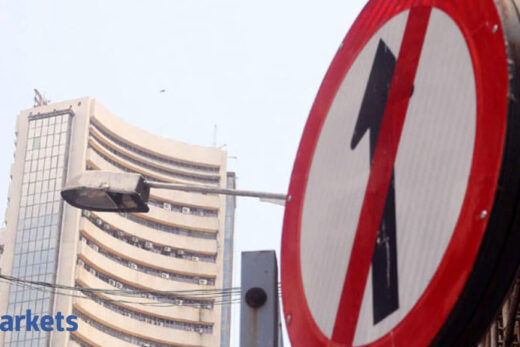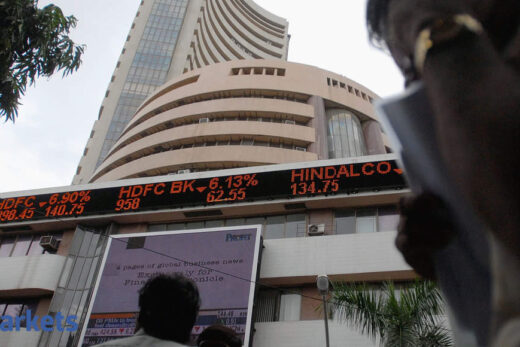There seems to actually be very divergent opinions from corporate India on a potential lockdown. Rajiv Bajaj has opposed it saying that nothing will change in 14 days that did not in 14 months. Which side of the fence are you on?
We are totally against lockdown as it is implemented in Maharashtra right now. I hope other states do not take the cue from what is happening in this state and follow it. It is not a great way to stop the infections. It does not help. It is a short term win and we cannot feel good about the lockdown thinking we have broken the chain but this is not the way to handle the crisis. So certainly, we are on Rajiv’s side. Lockdown is not a great way to break the chain.
Maharashtra is very critical for SKF and the bulk of your operations, factories and employees are from the state. How disruptive do you expect the lockdown to be?
It is tough to answer that because the government has not made it very clear what is exempted and what is not. It seems to me someone has taken the lockdown guidelines of last year, changed the date and put a new notification up. The same questions we had last year, we have now. So we are not sure what this means for us.
When they say process industries, what does it mean? When you say things like if industries have equipment, it cannot be shut down because restarting them has a time and energy cost. What does it mean? For example in SKF we run massive heat furnaces. We need those to be operational 24X7 but we are not a process industry. Does it mean the heat furnaces are a process industry and our bearing business is not? It is a bit unclear. So it is tough for me to answer. What is most concerning is the uncertainty around the disruption and the uncertainty around the guidelines.
Can you break for us city wise and approximate percentage of revenue from Maharashtra and how there can be a disruption because of this mini lockdown?
It is a bit more tricky than that. It is not just the factories we have in Maharashtra. We have six factories around the country. Many of our suppliers are based in Maharashtra. So what happens in Maharashtra, impacts not just the SKF factory in Pune, it also impacts our factories in Ahmedabad, Haridwar and Bangalore. Even our suppliers do not have clarity in terms of what is allowed to be opened, what is not allowed to be opened but the disruption could be tremendous.
Already 25% of all two-wheelers, four-wheelers and commercial vehicles are made in this state. If you add the supply chain connections to the state, that number goes up tremendously. So I imagine our numbers would be no different.
At what level are your factories operating now? What is the sense of the distinct pickup in the capex cycle that will lead to further growth for the company?
Till this order came at 8 PM last night, our factories were operating at full capacity 24/7, three shifts a day. We have seen a tremendous pickup in demand, in consumer sentiment and consumer demand. I would not go so far as to say that the capex cycle has picked up but we are certainly seeing some green shoots across sectors, including infrastructure, construction, F&B, machine tools and certainly automotive. That demand has picked up really well and our factories are trying very hard to cater to that demand, including our suppliers and that is why this lockdown is frustrating for us. All the hard work that the economy has done will get derailed very quickly by the Maharashtra lockdown which is about 15% of India’s GDP.
You spoke about the capex picking up and revival being underway. Does the lockdown potentially slow down the capex plans?
The lockdown has been on only for 15 days and so our capex plans do not get changed. But if it continues beyond 15 days in this state and other states start picking up cues from Maharashtra and impose their own lockdowns, certainly we will have to rethink our capex plans.
Railways continues to be a big opportunity led by the thrust on freight. How much of an impact would this localised lockdown have?
Railways is one of the growth segments — not just freight, but locomotives and passenger also. There is a new thrust on metro connectivity across the country. So, all four segments freight, passenger, locomotives and metro are firing on all cylinders. The impact of the lockdown is going to be most on freight because a lot of movement happens by rail freight and if the lockdown shuts down production in a state like Maharashtra, it will have an impact on freight being carried out of Maharashtra.
It will also have an impact on freight being carried from our suppliers to other factories in the country and that certainly is a big concern for us. Freight is picking up now, the DFC has now gone live with a couple of corridors and it is still early early days for the DFC. Everything is now in jeopardy because of the lockdowns.
What is the outlook on exports and domestic sales? Will domestic sales outpace exports led by the capex recovery?
We do not want to focus on exports beyond filling up our factories. The focus of SKF for the last six decades has been on domestic demand and all our production and all our manufacturing in the country is geared towards meeting this demand. Domestic demand is going up very well in the last few years if we take out the Covid disruption.
We are seeing tremendous pick up of demand now post Covid last year and our capex plans are linked to meeting this domestic demand. Today we meet this demand by localising about 65% of our production. The balance 35% is still imported from SKF factories around the world. That is the gap we want to close with our new capex plans. Whether we set one factory or more, we are still working out on those plans for the localisation of bearings production in India and our expectation is it will go up from 65% to close to 80-85% in the next couple of years.
Are you seeing a pickup in industrial demand?
Industrials is picking up now. It lags behind automotive. Automotives had a very immediate pick up post Covid last year — August-September onwards. Industrials did not pick up that quickly for obvious reasons. There is a lag in the industrial demand and a pick up is happening in the Jan-March quarter. It has been a good story for us on the industrial side and certainly the forecasts from our internal teams for the rest of the calendar year look very positive. In fact, I see automotive starting to slow down a little bit and industrials pick up by the same amount or larger amount, which really helps us in our growth forecast.



